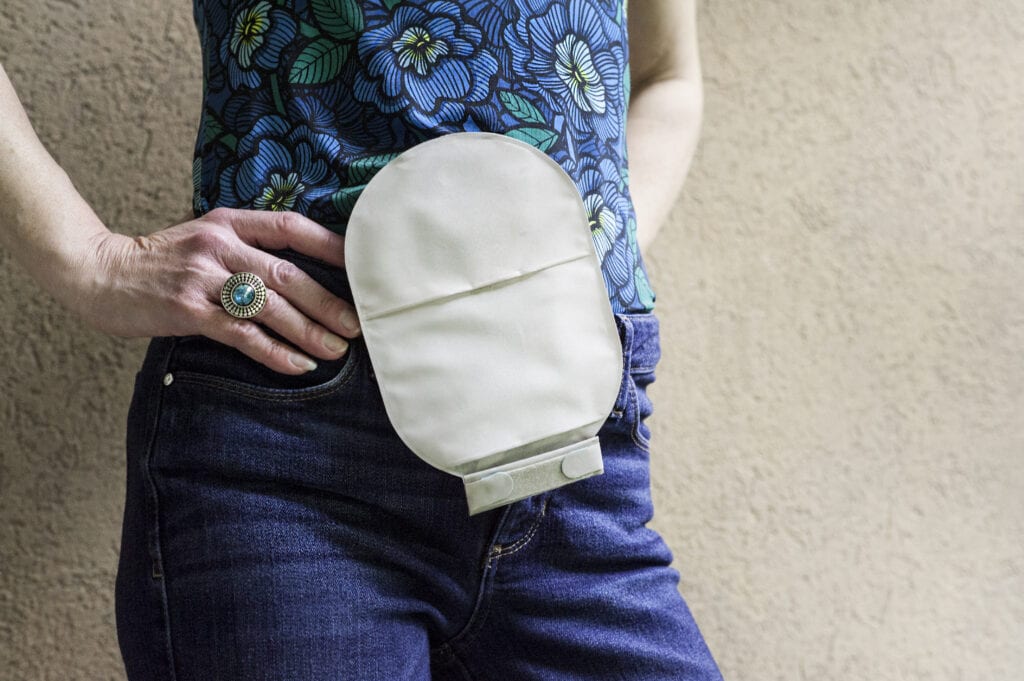How to Help Prevent Ostomy Leaks

For today’s Conversations with Clinicians, Cheryl Hutton, a wound, ostomy and continence nurse (WOC nurse) with CHC Solutions, Inc., discusses ostomy leaks and how to help prevent them.
One of the biggest challenges people with an ostomy experience is leaking. This can become emotionally frustrating and can also impact the condition around the stoma. Hutton said, “One thing I would want my patients to know is that everyone experiences leakage occasionally when you have an ostomy. The key is to be able to identify the cause and take action to eliminate that cause.”
Hutton said when teaching her ostomy patients, it is easiest for her to break down the causes of leakage into a few categories:
- Technique issues
- Anatomical or body issues
- Ostomy content issues
Leakage Caused by Technique Issues
When teaching about technique, I ask the patient to review exactly how they change their appliance including removal of pouch, care and cleansing of peristomal skin and applying the new pouch. I’ve been able to identify several reoccurring issues.
- The old appliance should not be removed forcefully because it can strip the peristomal skin and cause irritation.
- Baby wipes or any type of soap or cleanser with moisturizer should not be used to cleanse the peristomal skin.
- All old adhesive must be completely removed prior to applying a new pouch.
- Skin must be dried thoroughly prior to applying the new appliance.
- After applying skin prep, you need to allow it to completely dry before putting on a new pouch. This can take 2-3 minutes for no-sting products.
- If using a cut to fit wafer, cutting the opening too large/small for the stoma can cause leaks. The opening should not be more that 1/8” larger that the stoma itself.
- Not brushing off excess stoma powder prior to applying the new pouch or wafer makes it difficult for the pouch to stick. (For instance, if you applied tape over baby powder the tape would not stick well.)
- When applying the new pouch, it should be properly centered over the stoma. If you need a mirror, try to invest in one that is full-length.
- If you have issues with technique and you aren’t sure how to manage changes, contact your MD or your WOC nurse.
Leakage Caused by Anatomy or Body Issues
- The first thing I tell patients is to examine their stoma. How much does their stoma protrude from their abdomen when they are lying down, sitting down and standing up? Check the location of the opening of the stoma (the os). Is it in the center of the stoma? If not, you may need to be refitted.
- If the stoma has gotten smaller or flattened closer to the abdomen, the patient may need fitted with a convex pouching system and/or use a stoma belt.
- Does the stoma protrude more than it did right after surgery? Are there any lumps or irregular swollen areas around the stoma? If so, contact your MD or WOC nurse to be evaluated and for a refitting.
- Have you gained or lost 15-20 pounds since surgery? You may need to be refitted for a new pouching system, so contact your MD of WOC nurse.
- Do you have any creases in your abdomen on the sides of your stoma when you lie, sit or stand? There are ostomy accessories that can help alleviate those issues. Please contact your MD or WOC nurse for suggestions.
- Is the skin around the stoma healthy? If the skin is irritated or broken, not only can the leakage cause more damage, but the damage can make pouch adherence difficult. You can discuss products that can help with your WOC nurse or MD.
Leakage Caused by Ostomy Content Issues
- If you have a urostomy, be aware that certain medications such as diuretics and some BP medicines can increase output. You will need to empty the pouch more often.
- I recommend that all urostomy patients connect to night drainage so they don’t need to get up every few hours to empty the pouch.
- Generally, I suggest patients to not let their pouches get more than half to 2/3 full as the weight of the urine or stool can pull on the adhesion of the pouch.
- Pancaking is an issue that some ileostomy and colostomy patients experience in which thick stool doesn’t enter the pouch but rather stays up near the stoma. Increasing fluids, increasing fiber and lubricating the inside of the pouch are some suggestions that may help.
Unfortunately, leaks are going to happen periodically if you have a stoma. If leaks become more than periodic, or if you have questions, please reach out to your health care practitioner or WOC nurse for assistance. Stoma nurses have been helping ostomy patients since the 1960s. Also you may want to reach out to your local UOAA (United Ostomy Association) group for support.
If you don’t have a WOC nurse, you can reach out to one near you by accessing the WOCN web page at wocn.org. To learn about ostomy pancaking and how to help prevent it, visit https://www.chcsolutions.com/continuum_connect/ostomy/how-to-prevent-ostomy-pancaking/.
Send us questions you would like to have answered or topic suggestions for our next Conversations with Clinicians to marketing@chcsolutions.com or email our WOC nurse, Cheryl Hutton, at chutton@chcsolutions.com. Check back next month for our next segment!
*Disclaimer: Any health and wellness content presented is for general informational purposes only. Such content is not intended to replace or serve as a substitute for professional medical advice, diagnosis or treatment.
